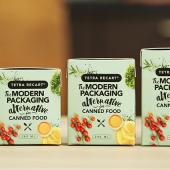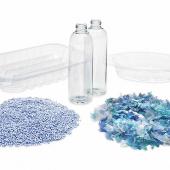Condemned to circularity

Editorial by Stefano Lavorini
When you say Design for Recycling
Last night I met a friend who, seeing me, addressed me as follows: "Man is dust and will return to dust, but he is precious dust in the eyes of God, because God created man, destining him for immortality"(1).
A little dismayed, I asked for the reason for this admonishment and he, smiling, confessed to me that he was fine (sic!), but that he had been struck by what he had heard - in the company of a few thousand other people - during the streaming webinar at the beginning of July organized by CONAI and dedicated to "Contribution diversification for paper and plastic packaging and design for recycling".
Reflecting on his words, I went to review the video of the event on YouTube, and came to the conclusion that my quirky friend - without wishing to be blasphemous - had a point in ascribing Man and his precious artifact, packaging, the same destiny. I will try to give a brief account.
CHAPTER ONE
Packaging must be increasingly recyclable and have a lower environmental impact: legislation requires it, consumers want it.
CONAI is working alongside the industry to facilitate this transition by providing tools to better design packaging (paper, plastic, aluminum guidelines). A qualifying aspect: the transfer of knowledge from recyclers to designers.
If on the one hand there are tools, on the other there are levers, first and foremost that of the diversification of the environmental contribution (CAC), which rewards packaging that is more easily recyclable than the current collection, selection and recycling chain.
Carlo Alberto Pratesi, dip. di economia aziendale, Università degli Studi Roma Tre (moderatore)
Luca Ruini, presidente Conai
Amelio Cecchini, presidente Comieco
Irene Piscopo, Conai
Barbara Del Curto, dip. di chimica, materiali e ingegneria chimica Giulio Natta, PoliMi
Massimo Ramunni, vice direttore generale di Assocarta
Giorgio Quagliuolo, presidente Corepla
Fabio Tognocchi, Conai
Laura Badalucco, Università Iuav di Venezia
Luca Stramare, Corepla
CHAPTER TWO
Diversification of the CAC for the paper sector from January 2022: starting from a base of real costs, 4 types of poly-bonded packaging have been defined on the basis of the percentage by weight of the paper component.
In fact, everyone considers paper to be recyclable, but this is not always true. In practice, when complex adulterations are carried out, there is a risk of losing this characteristic. In a future perspective, therefore, the Aticelca test could be used, on the basis of the procedure defined by a UNI standard, as a method for the classification of composite packaging.
The Aticelca test evaluates the different parameters that may affect recyclability (waste, adhesive particles, visual effect...): born as an aid tool to eco design, it has now also become a system of communication to the consumer of the packaging performance.
CHAPTER THREE
The current pillars of contribution diversification for plastics are the selectability and recyclability of packaging on an industrial scale, its prevalent destination circuit (domestic, industrial) and the values defined on the basis of the LCA study, which starts from the moment the waste is collected until it becomes a secondary raw material.
As of January 2022, the number of bands is expected to increase from 4 to 5, adding as an element of evaluation the aspect related to the management costs of the various wastes. To date, the values of the various bands have not yet been defined.
CHAPTER FOUR
The future of recyclability is written, only the details are missing.
The European legislator has already decided that, by 2030, all packaging placed on the market must be recyclable on an industrial scale, i.e. become a secondary raw material for which there is an end use.
That is, it means that packaging must be designed from the start to be recyclable.
Recycling targets have already been raised and for plastic packaging the quota has been set at 50% in 2025 and 55% in 2030, with a new measurement point that is much more stringent than the one in use today.
In the near future, interventions are likely in the direction of a reduction in the overall volume of packaging waste, promotion of reusable packaging and a reduction in over-packaging; with regard to plastic packaging, minimum recycled content obligations in addition to those already in place.
What will have to be done - according to the European legislator - will be to move from a semi-linear model in which recycled plastic ends up in a product that is not necessarily packaging, to a circular model where packaging will have to be designed to be recyclable in the production of new packaging. In other words, the quality of the recycled plastic will have to be thought about.
In short, mutatis mutandis, "Packaging you are and packaging you will return."
And so it comes full circle.
(*) “Remember, man, that you are dust and to dust you shall return," Bible (Gen 3:19).
"Man is dust and to dust he will return, but he is precious dust in the eyes of God, because God created man, destining him for immortality," Pope Benedict XVI, General Audience, February 17, 2010.




















